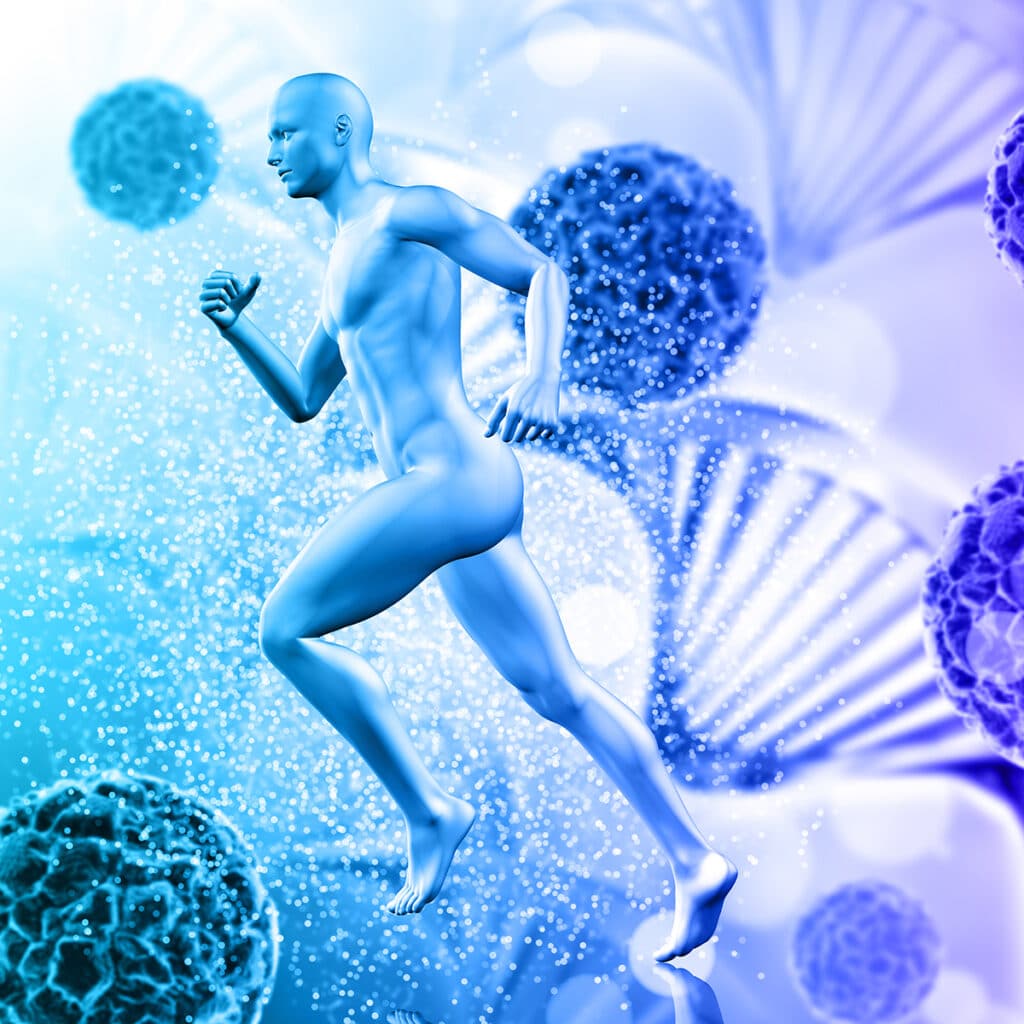Protective cap at the chromosome end
"Telomeres are the ends of our genetic material threads, the chromosomes. They act as a protective cap, as they become a little shorter each time a cell divides," explains Blackburn, one of the discoverers of telomeres and winner of the 2009 Nobel Prize. Because these end caps do not contain any vital genes, the chromosome can cope with their gradual shrinking. But only to a certain extent: If they are missing completely, the ends of the chromosomes tend to stick together and the cell becomes non-functional.
In the early 1980s, Blackburn and her colleague Jack Szostak demonstrated that this protective function and even the structure of telomeres are largely identical across the animal kingdom and even in unicellular yeasts. They also succeeded in decoding the typical DNA sequence of these end caps. "Previously, the telomeres were simply a 'blob' at the end of the chromosomes," says Blackburn. We now know that human telomeres comprise 5,000 to 12,000 base pairs with the sequence TTAGGG. Between 30 and 200 of these are lost with each cell division.
Telomerase enzyme compensates for telomere loss
But the real sensation - and the important finding for ageing research - was once again the CiliatesBlackburn observed that its telomeres were not at all behaving as they should: Instead of gradually getting a little shorter, they kept getting longer in between and seemed to grow. How was this possible? The cause of this, the researcher discovered together with her colleague Carol Greiner, was an enzyme called Telomerase. It lengthens the protective end caps a little before each cell division, so that the telomeres have lost little or no length afterwards.
The activity of the enzyme is therefore decisive for the "fitness" of the cell and its ability to divide. "Tumour cells are immortal, which means they can continue to divide," says Blackburn. "Their telomeres are short, but they have a huge amount of telomerase. This shows that telomerase protects the telomeres. It is therefore not the telomere length alone that determines how often cells can still divide, but a combination of both: the telomere length and the amount of telomerase."
However, we now know that this enzyme activity and therefore also the length of the telomeres decreases in the course of life. While the cells of a newborn can still divide 80 to 90 times in culture, the cells of a 70-year-old person can only divide 20 to 30 times.
Live longer thanks to longer telomeres
Could it be that in centenarians, for example, telomerase is more active and the chromosome ends are more effectively protected? Geneticist Richard Cawthon from the University of Utah investigated this connection in 2003. In a long-term study, he tracked the lifespan of two groups of older test subjects, one with shorter and one with longer telomeres. The results showed that although the end caps shrank over time in all subjects, the group with the longer end caps lived on average five years longer.
"Statistically, there is a correlation between telomere length and age," explains Blackburn. "But you can't draw conclusions about absolute age based on telomere length." According to Cawthon, we could add ten to 30 years to our lifespan if we were able to completely stop telomeres from shrinking. But, the researcher admits, this would still not prevent ageing. Unfortunately, telomeres are only one part of the complex changes that we perceive as ageing.
The chaga mushroom, for example, is 30% closer to human DNA than any other plant. More about this in the Chaga Facts!
https://theartofraw.at/autophagie-zellrecycling-durch-fasten/




